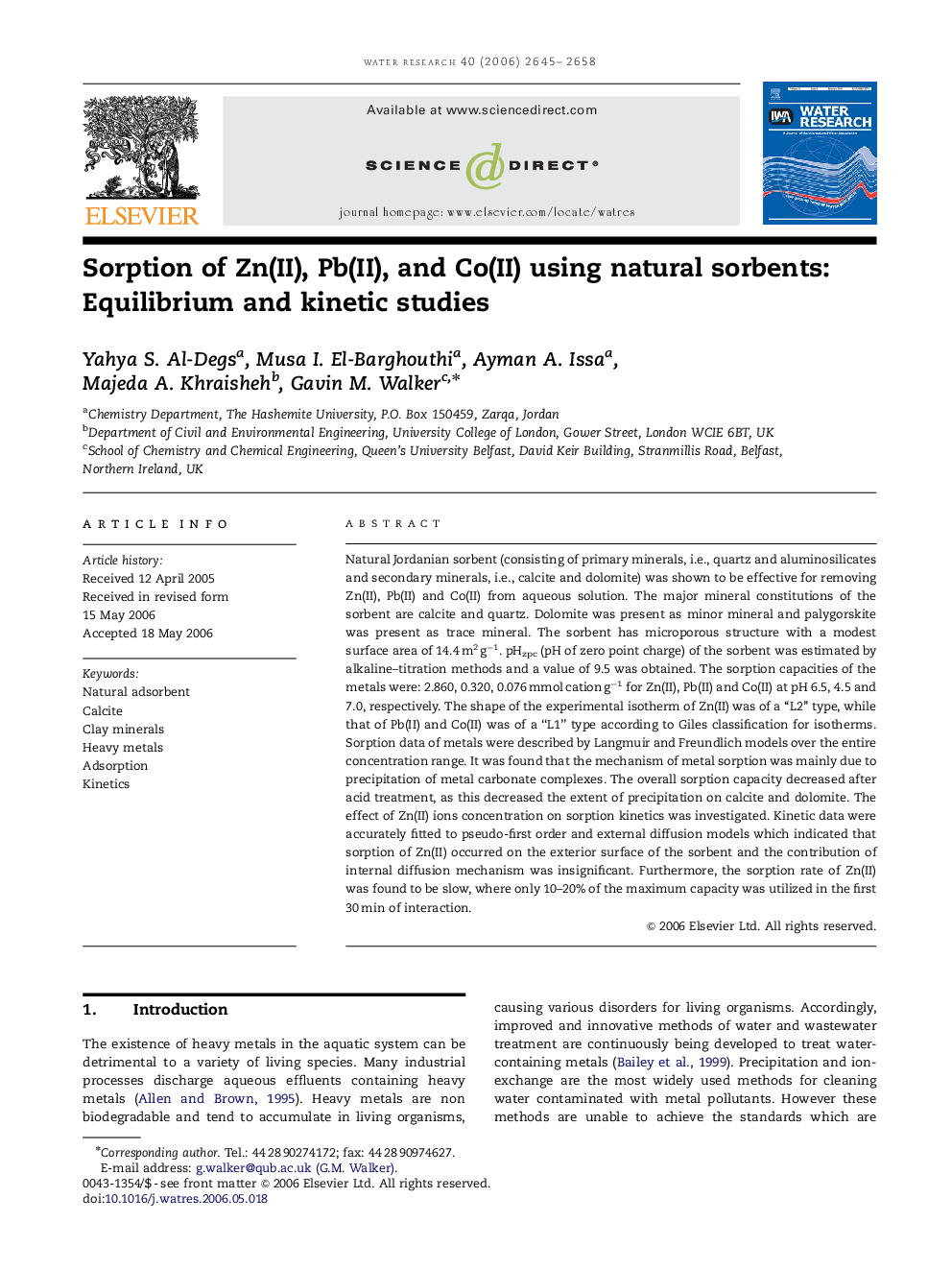| Article ID | Journal | Published Year | Pages | File Type |
|---|---|---|---|---|
| 4485695 | Water Research | 2006 | 14 Pages |
Natural Jordanian sorbent (consisting of primary minerals, i.e., quartz and aluminosilicates and secondary minerals, i.e., calcite and dolomite) was shown to be effective for removing Zn(II), Pb(II) and Co(II) from aqueous solution. The major mineral constitutions of the sorbent are calcite and quartz. Dolomite was present as minor mineral and palygorskite was present as trace mineral. The sorbent has microporous structure with a modest surface area of 14.4 m2 g−1. pHzpc (pH of zero point charge) of the sorbent was estimated by alkaline–titration methods and a value of 9.5 was obtained. The sorption capacities of the metals were: 2.860, 0.320, 0.076 mmol cation g−1 for Zn(II), Pb(II) and Co(II) at pH 6.5, 4.5 and 7.0, respectively. The shape of the experimental isotherm of Zn(II) was of a “L2” type, while that of Pb(II) and Co(II) was of a “L1” type according to Giles classification for isotherms. Sorption data of metals were described by Langmuir and Freundlich models over the entire concentration range. It was found that the mechanism of metal sorption was mainly due to precipitation of metal carbonate complexes. The overall sorption capacity decreased after acid treatment, as this decreased the extent of precipitation on calcite and dolomite. The effect of Zn(II) ions concentration on sorption kinetics was investigated. Kinetic data were accurately fitted to pseudo-first order and external diffusion models which indicated that sorption of Zn(II) occurred on the exterior surface of the sorbent and the contribution of internal diffusion mechanism was insignificant. Furthermore, the sorption rate of Zn(II) was found to be slow, where only 10–20% of the maximum capacity was utilized in the first 30 min of interaction.
